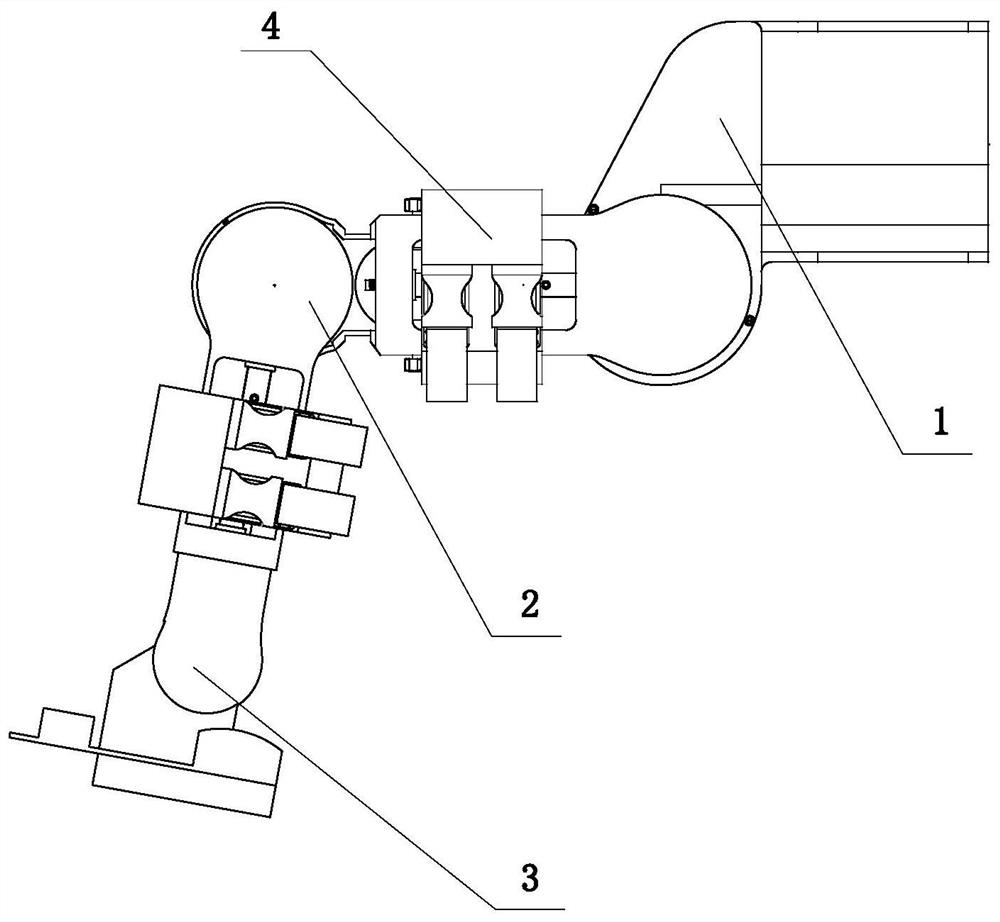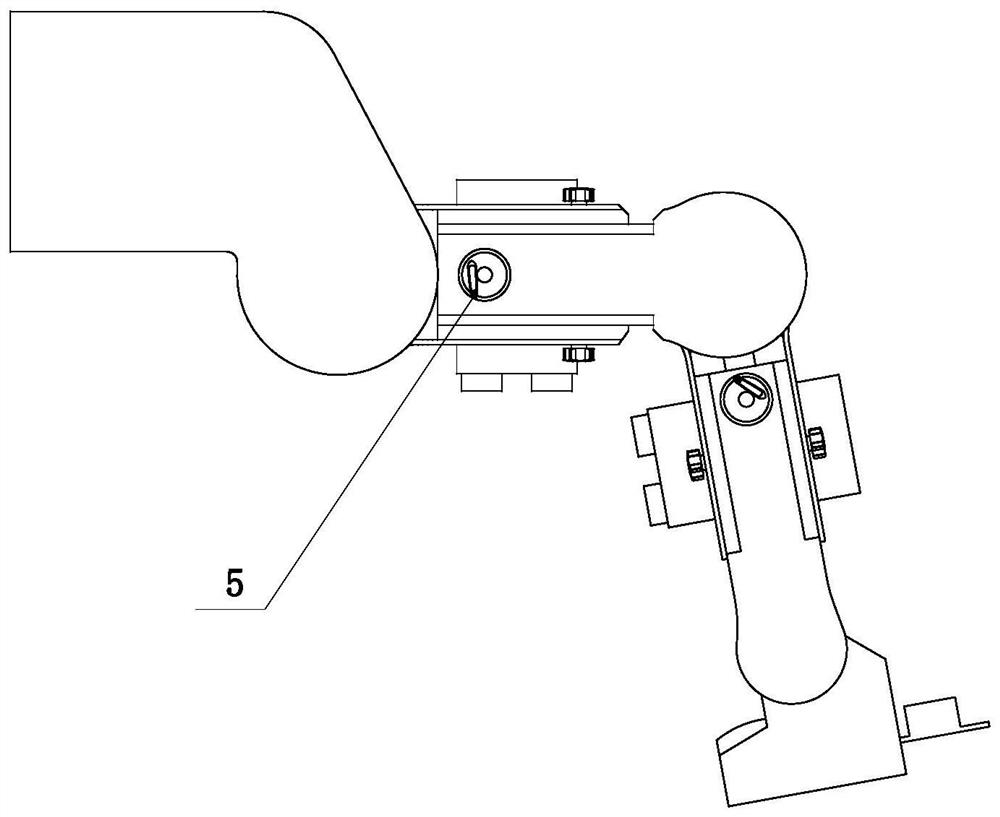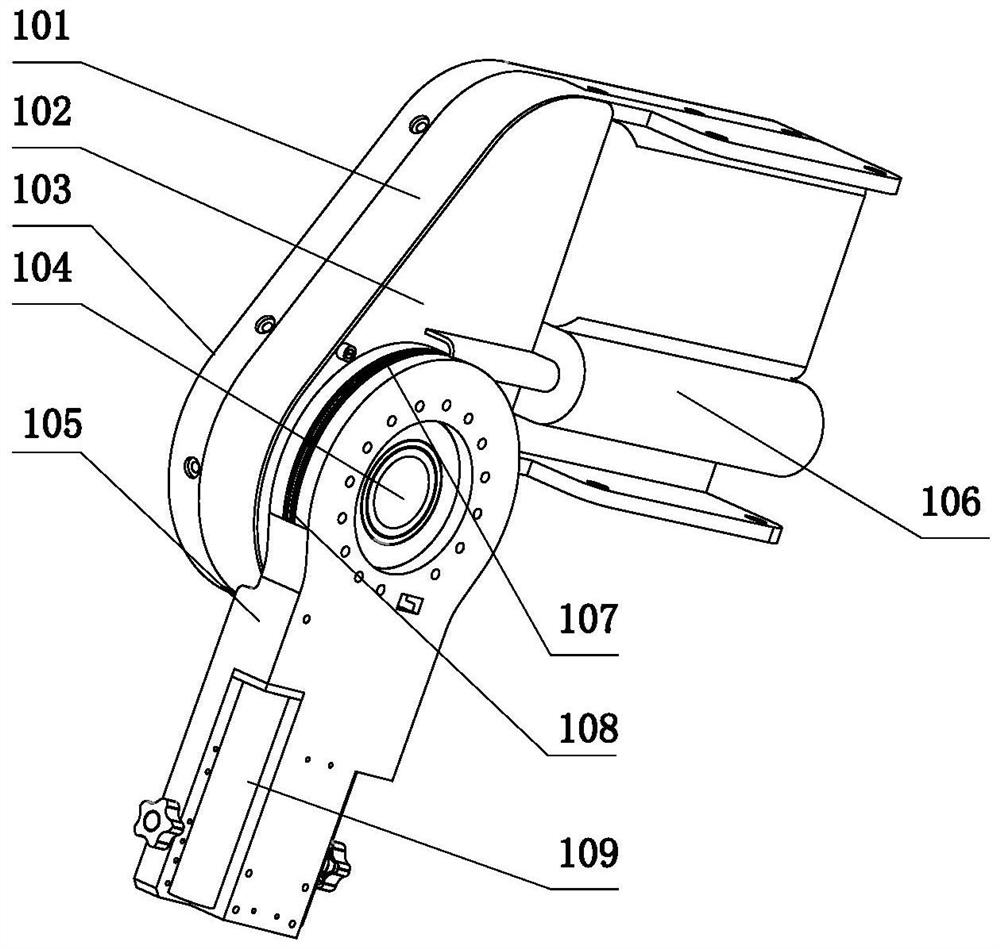Lower limb rehabilitation robot capable of balancing its own weight and method of using the same
A rehabilitation robot and balance technology, applied in the field of rehabilitation robots, can solve the problems of poor robot size, weight and safety, unsuitable lower limb rehabilitation robots, and higher requirements for driving systems, etc., to improve convenience, reduce torque requirements, and improve The effect of comfort
- Summary
- Abstract
- Description
- Claims
- Application Information
AI Technical Summary
Problems solved by technology
Method used
Image
Examples
Embodiment Construction
[0059] The technical solutions in the embodiments of the present invention will be clearly and completely described below with reference to the accompanying drawings in the embodiments of the present invention. Based on the embodiments of the present invention, all other embodiments obtained by those of ordinary skill in the art without creative efforts shall fall within the protection scope of the present invention.
[0060] It should be noted that, unless otherwise specified, the technical or scientific terms used in this application should have the usual meanings understood by those skilled in the art to which the present invention belongs.
[0061] like figure 1 and figure 2 As shown, a lower limb rehabilitation robot that can balance self-weight includes a hip joint assembly 1 with a self-balancing self-weight device, a self-locking and protective knee joint assembly 2, a self-locking and protective ankle joint assembly 3, a manual length adjustment assembly 4 and leggi...
PUM
 Login to View More
Login to View More Abstract
Description
Claims
Application Information
 Login to View More
Login to View More - R&D
- Intellectual Property
- Life Sciences
- Materials
- Tech Scout
- Unparalleled Data Quality
- Higher Quality Content
- 60% Fewer Hallucinations
Browse by: Latest US Patents, China's latest patents, Technical Efficacy Thesaurus, Application Domain, Technology Topic, Popular Technical Reports.
© 2025 PatSnap. All rights reserved.Legal|Privacy policy|Modern Slavery Act Transparency Statement|Sitemap|About US| Contact US: help@patsnap.com



